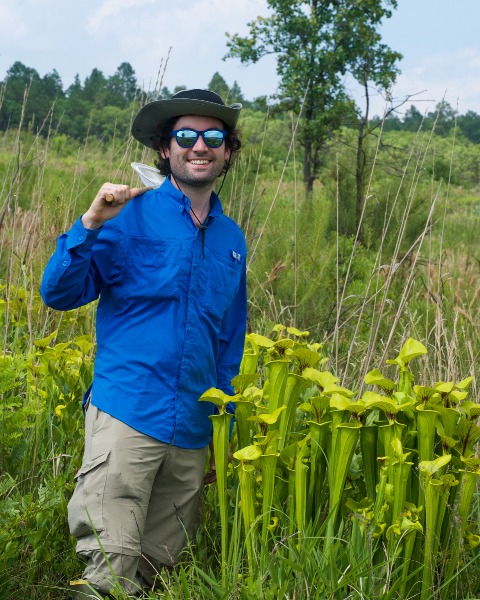SysEB
Student Competition 10-Minute Paper
Grad 10-min: SysEB, Evolution 1
One flew over the pitcher plant: The first phylogeny of the pitcher plant fly genus Fletcherimyia, with noteworthy updates on fly-host relationships
On-Demand

Peter Kann
Florida Atlantic University
Fort Pierce, Florida- TL
Trip Lamb
East Carolina University
Greenville, North Carolina .jpg)
Michael J. Brewer (he/him/his)
Texas A&M AgriLife Research
Corpus Christi, Texas
Presenting Author(s)
Co-Author(s)
North American pitcher plants (genus Sarracenia) are known for their carnivory, trapping insects with modified cylindrical leaves (pitchers). These plants are paradoxically the basis of an ecologically distinct arthropod community that utilizes the pitcher’s resources. Many such arthropods are obligate associates, depending on the pitchers to complete their life cycles. One entire sarcophagid fly genus, Fletcherimyia, associates with Sarracenia exclusively; its larvae develop entirely within the pitchers. Previous studies characterized Fletcherimyia-Sarracenia interactions;four of the eight fly speciesappear to rely on a single pitcherspecies as host, whereas the remaining four fly species affiliate with multiple different pitcher species. However, many of these fly-pitcher affiliations are based on limited observation with narrow geographic scope, and the species within Fletcherimyia were based on morphology with no molecular data. We conducted the most comprehensive ecological sampling of Fletcherimyia to date, yielding a molecular dataset of all eight described fly species with updated observations of plant host usage across their respective geographic ranges. Here we present the first phylogeny of Fletcherimyia,based on mtDNA (cox1) sequence, providing novel evolutionary insight and molecular support to previous species descriptions. To reevaluate host plant usage, we defined Fletcherimyia-Sarracenia interactions by larval host use, as larvae are bound by pitcher deposition whereas adult flies potentially visit multiple species of Sarracenia. Larvae were typed genetically to insure accurate identification. Our survey revises earlier perceptions of fly host usage, particularly for the two endangered pitcher species, and will have important implications for fly-pitcher conservation.


